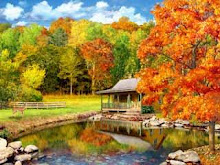75 % of the earth is covered with water.
97 % of earth’s water is in the oceans. Only 3 % of the earth’s water can be used as drinking water. 75 % of the world’s fresh water is frozen in the polar ice caps.
Although a person can live without food for more than a month, a person can only live without water for approximately one week.
The average person in the United States uses 80 to 100 gallons of water each day. During medieval times a person used only 5 gallons per day.
About 1.2 billion gallons of potable water are used in New Jersey each day.
87 % of New Jersey’s population obtains its drinking water from a public water system and 13 % from private residential wells.
It takes 2 gallons to brush your teeth, 2 to 7 gallons to flush a toilet, and 25 to 50 gallons to take a shower.
It takes about 1 gallon of water to process a quarter pound of hamburger.
It takes 2,072 gallons of water to make four new tires.
Sources of water pollution include: oil spills, fertilizer and agricultural run-off, sewage, stormwater, and industrial wastes.
Ancient Egyptians treated water by siphoning water out of the top of huge jars after allowing the muddy water from the Nile River to settle.
Hippocrates, known as the father of medicine, directed people in Greece to boil and strain water before drinking it.
In the 1950’s scientists began to suspect that water might carry diseases. Although earlier treatment of water could make the water safer, it was mainly done to improve the taste, smell or looks of the water.
The first United States water plant with filters was built in 1872 in Poughkeepsie, New York.
In Altona, Germany in 1892, the water from the Elbe River filtered before drinking. At the time, hundreds of people from nearby Hamburg (which did not filter their water) died from cholera. The citizens of Altona were untouched by this waterborne disease.
In 1908, Jersey City, New Jersey and Chicago, Illinois were the first water supplies to be chlorinated in the United States.
The Safe Drinking Water Act (SDWA) of 1974 represents the first time that public drinking water supplies were protected on a federal (national) level in the United States. Amendments were made to the SDWA in 1986 and 1996.
New Jersey Legislature approved the New Jersey Safe Drinking Water Act, which authorized the New Jersey Department of Environmental Protection to assume primacy and enforcement responsibility for the Federal Safe Drinking Water Program.
One gallon of water is equal to 3.785 liters of water.
One cubic foot of water is equal to 7.48 gallons of water.
Water boils at 212 degree Fahrenheit or 100 degree Celsius.
Water freezes at 32 degree Fahrenheit or 0 degree Celsius.
extracted from: http://www.njawwa.org/kidsweb/
Thursday, January 7, 2010
::FUN WATER FACTS::
Posted by insyirah sensei at 11:55 PM
Subscribe to:
Post Comments (Atom)










0 comments:
Post a Comment